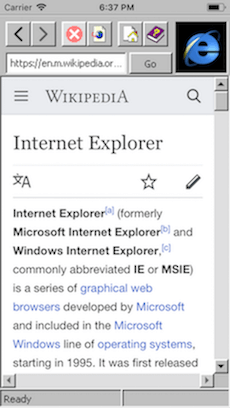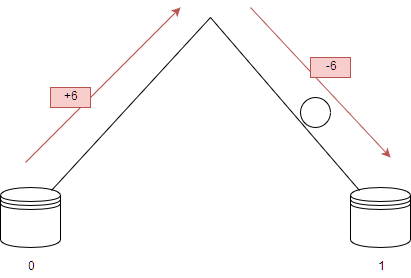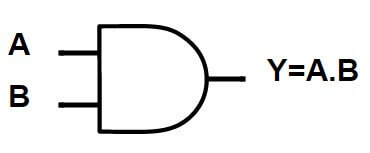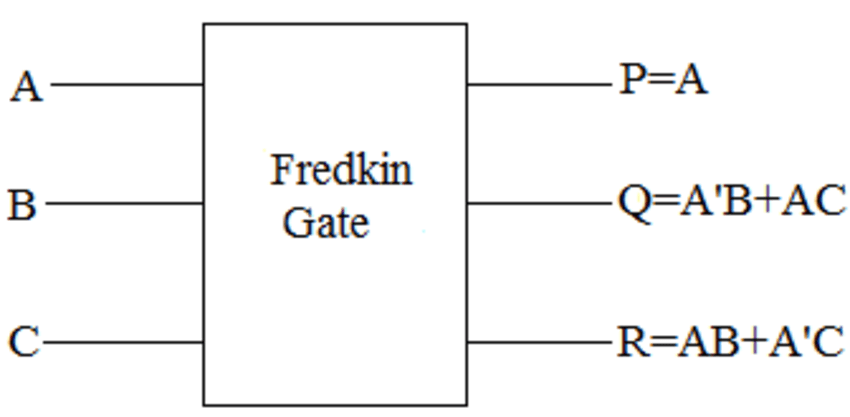每天推薦一個 GitHub 優質開源項目和一篇精選英文科技或編程文章原文,歡迎關注開源日報。交流QQ群:202790710;微博:https://weibo.com/openingsource;電報群 https://t.me/OpeningSourceOrg

今日推薦開源項目:《與其說古典風不如說古老 ClassicKit》GitHub鏈接
推薦理由:這個項目是一套iOS組件,當然了,它古老就古老在它是Windows95風格的。當然了,雖然畫風變老但是功能一樣好用,它還是可以當作普通的組件去使用。這個作者最精妙的地方就在於他加了這麼一個藍屏的更新,可以說是相當還原了:
(3/17) Added a simple Blue Screen of Death! Simply shake the device vigorously.

今日推薦英文原文:《Zero Power Computing — How to Perform Calculations Using Zero Power》作者:Brandon Skerritt
推薦理由:這篇文章應該算是介紹一種魔法了……講的是如何使用更節能的方法來進行計算,對,是節約能源那個節能,興許這篇文章可能就是改變未來的基石也說不定。
Zero Power Computing — How to Perform Calculations Using Zero Power
Moore』s law is dying. There have been countless articles on this. We cannot keep on packing transistors into a given unit of space, expecting each time that the power of the CPU doubles every year.
The smaller and smaller the chips are made, the more problems that are produced. To think this rule would last forever is naïve, we』re running out of space and it』s going to cause problems. Luckily there』s a storm brewing. It is theoretically possible to perform computations with zero power. This article will explain how that is possible.
In the 1950s Computer Scientists wanted to know if it is possible to build an accurate simulation of classical physics. Not a 「close to」 simulation, but 100% accurate.
Whilst working this problem, they discovered something interesting:
Newton』s Laws of Physics are reversible
Let』s say you see a ball from a basketballers hand in an alternate world. In this world, friction doesn』t exist. For the next few examples, remember that in this world friction doesn』t exist. The ball is dropped, bouncing off the ground to the same starting height it started at.
Let』s put some arbitrary numbers on this now. Let』s say that the ball gains 6 units of energy to reach the floor.
When the ball touches the floor, it goes back up again — using 6 units of energy.
In this world of pure Newtonian physics, the laws are reversible.
If we made a movie out of the ball falling; the ball would look the same going forwards in time as it would going backwards in time.
Let』s see another example from this same world — taken from the book 「Computing with Quantum Cats」.
Let』s assume you have 2 balls of the same colour on a snooker table. One of the balls hits the other and you filmed this interaction. If you reversed the film it would make as much sense as it did going forward. If you presented this film to someone and asked them 「Which ball hit the other ball?」 they would not know the answer.
Take a look at the ball below. We do not hold any information about how the ball got there, only that it is there. We don』t know whether it was placed, kicked, dropped or even teleported there.
We don』t know whether the ball was dropped from 40ft or 50ft, we hold no information about this ball.
From the last few examples we can see that there is an interesting link between information and energy.
Although each individual action is reversible, if we add more balls it』s not reversible. Let』s say we take the snooker example from earlier, but this time we watch a break at the start of the game:
We can always tell which one is the future and which one is the past. The future is the one with more disorder.
As the second law of thermodynamics states:
The amount of disorder in a system always increases and the result is not reversible.
The term disorder is often called entropy. These rules of thermodynamics and entropy is useful to us since entropy is measured in information.
What』s important to note here is that the relationship between thermodynamics, reversibility, and information are all based on the act of computation itself. Not the power required to run the computer or the power required to run the monitors.
Rolf Landauer found out in 1961 whilst a researcher at IBM that some computation does not need to dissipate energy. He found out that computation and the physical reality are united. In his own words:
「Information is not a disembodied abstract entity; it is always tied to a physical representation. It is represented by engraving on a stone tablet, a spin, a charge, a hole in a punched card, a mark on paper, or some other equivalent. This ties the handling of information to all the possibilities and restrictions of our real physical word.」 — Rolf Landauer
We have a connection between reversibility and thermodynamics. We have a connection between thermodynamics and information. Therefore we have a connection between reversibility and information.
The author John Gribbin describes a fun thought experiment to better get an overall view of this thinking.

The 0 and 1 here represent binary bits. The hill represents the physical aspect to toggling the binary bit. When the ball goes over the hill and down the other side, it』ll toggle the binary bit to be 1.
When it does the reverse, it』ll toggle the binary bit to be 0.
The ball traversing the hill would look like this:

The ball gains an arbitrary amount of energy as it is pushed up the hill and it releases this energy going down the hill.
It has, effectively, cost 0 energy to toggle the binary bit. This is an important statement. John Von Neumann once said 「it costs energy to toggle a switch」 but our little experiment has displayed that it it possible to not expend energy.
Although it cost nothing to toggle the switch (moving the ball from one side to the other) it will cost something to check where the ball is. It will cost something to check what position the switch is in.
The act of the computation itself can cost nothing, but everything else might cost something.
Computers are entirely made up of toggles like this. If it costs nothing to toggle a simple switch like this, we can have entire circuit boards built up of gates that cost nothing.
Gates
Let』s take a look at some logic gates.
A logic gate is a decision making tool. You give it some input and it gives out an output. One of the simpler logic gates is the AND gate.

Logic gates can only take 0 or 1 as input. The AND gate outputs the product of A and B. Or in other words, it only outputs 1 when A and B are 1.

In all other instances when A and B are not both 1 the AND gate will output 0.
If we come across an AND gate and the output is 1 — we know for sure that the 2 inputs were 1 and 1.
If we come across an AND gate and the output is 0, we don』t know what the input was. It could of been A = 0, B = 1 or A = 1, B = 0 or A = 0, B = 0.
We cannot reverse the AND gate to find out what the input is when the output is 0.
A reversible computer has to be built out of logic gates that can be reversed. The AND gate is not a reversible logic gate so it is not useful here. To build a computer which can replicate classical physics the components of the computer have to be reversible too.
Reversible Programs
Charles Bennet in 1973, whilst working at IBM, created a few simple reversible computer programs. The first half would do the computations and the second half would undo the computations. In his words:
「The first half would generate the desired answer … as well as typically, some other information … the second half would dispose of the extranous information by reversing the process that generated it but would keep the desired answer.
This led me to believe that any computation could be rendered into this reversable format by accumulating a history of all information that would normally be thrown away, then disposing of this history by the reverse of the process that generated it. To prevent the reverse stage from destroying the desired output along with the undesired history, it suffices, before begginging the reverse stage, to copy the output on blank tape. Copying onto blank tape is already logically reversible.」 — Charles Bennet
Simply put the proces is as follows:
- Compute the answer
- Write the answer down somewhere
- reverse all computations to get back to the original state
Bennet』s work was purely theoretical. However, Ed Fredkin had designed a reversable logic gate to build a computer with.
Fredkin Gates
The Fredkin gate is a universal gate. Meaning that any logical or arthimetic instruction can be created using a Fredkin gate. Any logic circuit can be created using just Fredkin gates. This means that any computer can be made entirely out of Fredkin gates.
If you are not so sure on logic and gates, check out this previous article I』ve written here.

Wikipedia has a nice explanation for how Fredkin gates work, copied here with slight changes.
The Fredkin gate maps three inputs (A, B, C) onto three outputs (P, Q, R). The C input is mapped directly to the R output. If C = 0, no swap is performed; A maps to P and B maps to Q.
Otherwise (if C = 1) the outputs are swapped. A maps to Q and B maps to P. C is always mapped to R.
If this is run backwards, it undoes itself. If the output of this Fredkin gate is fed to the input of another Fredkin gate (P to A, Q to B, R to c) the output of the second Fredkin gate is the same as the input of the first Fredkin gate.
Conclusion
If we build a perfect Fredkin gate we will get zero power computation. Computing would no longer cost energy. This can change everything. Blockchain uses up enough energy to power a country. Imagine a blockchain that consumed next to 0 energy, the only limitations for it would be the memory problems.
The battery life of a mobile phone would be 10x that of a phone today. The phone no longer has to waste power in computing things, the only power it wastes is keeping the screen on. But, there are always downsides to the upsides.
The problem with building a reversible computer is that it』s hard. It requires us to completely shift our mindset away from everything we know. Computer Scienctists have always buitlt computers to consume electricity. Which have always been built using traditional logic gates. This is a quantum shift in not only our thinking but, fundamentally, how every single device on the planet should behave.
It』s also a slow process. Although Fredkin gates can reverse and give us back the computational energy they can never give back time. What might take something 4 seconds on a CPU to compute would take 8 seconds on a Fredkin gate to compute. This is due to the fact that once you have computed it, you have to undo all the calculations — effectively 2 times the process.
It』s also impossible as of yet. Throughout this article we have assumed that we live in a frictionless world, which isn』t very reasonable. It』s theoretically possible, but not much work has been done here.
In the 1990s a research team discovered that the energy savings from a Fredkin gate are linearly proportional to how slowly you run them.
In 2016 it was announced that researchers had created a quantum Fredkin gate which could be used to build a quantum computer. This is a quantum gate, so cannot be used in ordinary analogue computing. It』s one step closer to building computers which can perform zero power computations, but it』s still a long way off.
每天推薦一個 GitHub 優質開源項目和一篇精選英文科技或編程文章原文,歡迎關注開源日報。交流QQ群:202790710;微博:https://weibo.com/openingsource;電報群 https://t.me/OpeningSourceOrg
